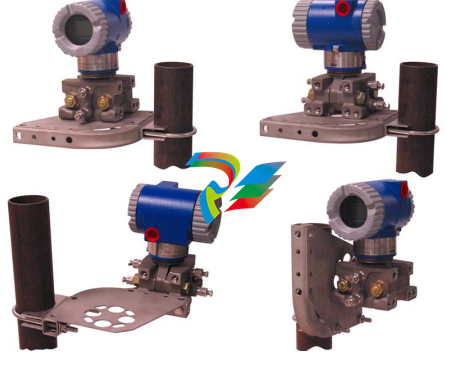
schneiderUniversal Instruction Manual I/A Series® Pressure Transmitters Models IAP10, IAP20, IGP10, IGP20, IGP25 and IGP50, IDP10, IDP25, IDP50 Configuration, Calibration, Installation, and Operation
eliminate the position zero effect.
Mechanical Installation
Differential Pressure Transmitter
The IDP10, IDP25, and IDP50 differential pressure transmitters can be supported by the process
piping (Figure 6), on a bypass manifold (Figures 7 through 10), or mounted to a vertical or
horizontal pipe or surface using an optional mounting bracket (Figures 11 through 16). For
dimensional information, refer to DP 020-446.
NOTE
1. The IDP25 and IDP50 transmitters are only available in the Traditional Structure
at this time.
2. If the transmitter is not installed in the vertical position, readjust zero output to
eliminate the position zero effect.
3. When pvdf inserts (structure codes 78/79) are used, the process connection must
be made directly to the pvdf inserts in the Hi and Lo side process covers.
4. The transmitter should be mounted so that any moisture condensing or draining
into the field wiring compartment can exit through one of the two threaded
conduit connections.
Process-Mounted Transmitter
Figure 6 shows the transmitter mounted to and supported by the process piping
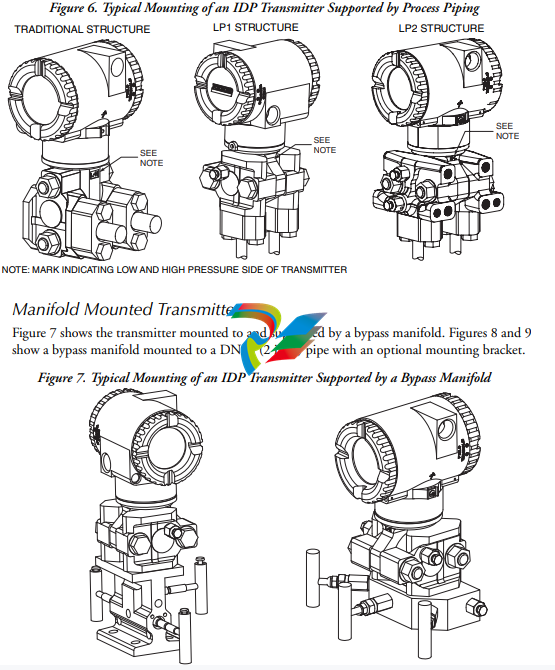
Figure 8. Typical Mounting of M4A and M4T Manifold with -AM Bracket
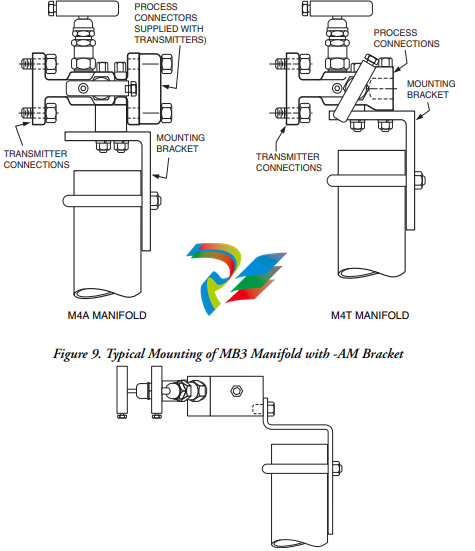
Pipe- or Surface-Mounted Transmitter
To mount the transmitter to a pipe or surface, use the Standard Mounting Bracket Set (Model
Code Option -M1 or -M2) or Universal Bracket Mounting Set (Model Code Option -M3).
Standard Mounting Bracket
The transmitter (with either traditional or LP2 low-profile structures) can be mounted to a
vertical or horizontal, DN 50 or 2-in pipe using a standard bracket. See Figure 11 for details and
Figure 12 for examples of different situations. Secure the mounting bracket to the transmitter
using the four screws provided. Mount the bracket to the pipe. To mount to a horizontal pipe,
turn the U-bolt 90° from the position shown in Figure 11. The mounting bracket can also be
used for wall mounting by securing the bracket to a wall using the U-bolt mounting holes.
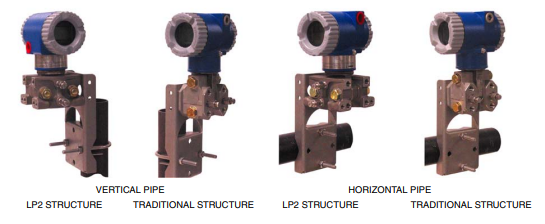
Universal Mounting Bracket
The transmitter (with either traditional or LP2 low-profile structure) can be mounted in a myriad
of positions to a vertical or horizontal, DN 50 or 2-in pipe using a universal bracket. See
Figure 13 for details of a universal bracket and Figure 14 through Figure 16 for examples of
different mounting situations. Secure the mounting bracket to the transmitter using the two long
or four short screws provided. Mount the bracket to the pipe. The mounting bracket can also be
used for wall mounting by securing the bracket to a wall using the U-bolt mounting holes.
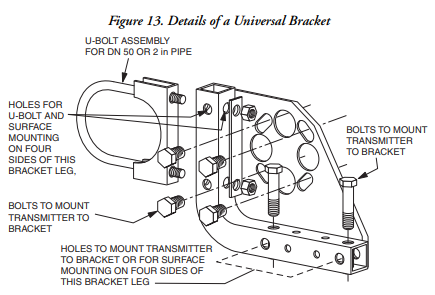
Figure 14. Mounting a Transmitter with Traditional Structure Using a Universal Bracket

Figure 15. Vertical Pipe Mounting a Transmitter with LP2 Structure Using a Universal Bracket
